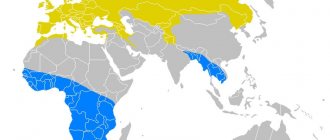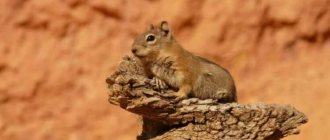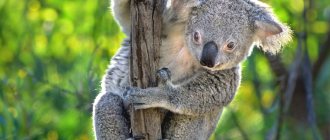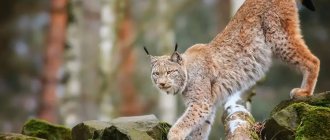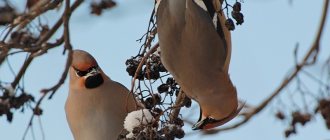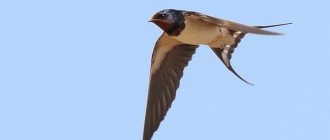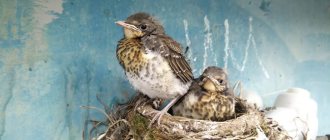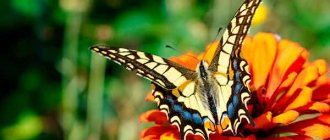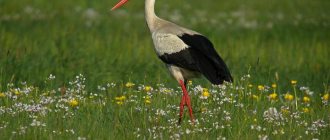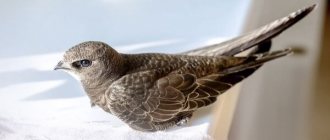Review author: “ZooVita”
Breeding ornamental birds is a fairly common practice today. And these birds are not always parrots of various subspecies. Amadin is an example of an incredibly beautiful and easy-to-care representative of the passerine family.
You can recognize a finch in a photo by its specific coloring and a number of other original characteristics.
Habitat of the bird Amadin
Birds of this family are common in almost all regions, but mainly in warm regions: Australia, Oceania, and the countries of both American continents.
The total lifespan of ornamental birds is about 5 years. The question of how long finches live is quite controversial. In practice, the quality of care, diet, and prevention of specific diseases are important.
Most of the subspecies prefer flat steppes, some individuals live in forests or on the edges.
Rules of care
Amadins are unpretentious and are suitable for people who are busy and cannot devote much time to animals. Moreover, they are specially accommodated as a couple or a family. Maintenance requirements are very simple.
Moulting parrots
Feather change in birds is a normal process that occurs twice a year. During the molting process, birds' character changes, their appetite deteriorates, and they may fall into apathy. They need a little more attention at this time.
- Provide enough light, at least 10 hours a day.
- Raise the temperature in the room, aiming for 26 degrees.
- Add air humidity, bring the indicator to 60%.
- Bath regularly, put baths every day.
- Add mineral supplements and Tsamax.
Molting of cockatiel parrots.
Bathing and hygiene procedures
A very important part of care is regular water treatments. The birds happily splash around in special bathing suits. They are installed or suspended, a little water is poured, up to 15 mm deep.
Amadins splash in the water and moisten their feathers, washing away dirt. The bathing tank itself must be kept clean and removed immediately after use.
Water procedures are considered especially important during molting. Then the birds feel itching and discomfort, and moisture alleviates these conditions.
Diseases of finches
Usually, cheerful and cheerful birds immediately change their behavior when they develop diseases. First of all, they refuse to eat and become sleepy and apathetic.
There are a number of specific diseases.
- Lesions of the gastrointestinal tract, disorders.
- Deformations of the beak and feathers.
- Baldness, injuries, internal damage.
- Infections, diseases, fungi.
- Viral diseases, internal parasites.
Only a specialist can make an accurate diagnosis after examination and tests. He will prescribe treatment and determine preventive measures.
Diet of Amadin bird
In the wild, birds feed mainly on plant foods, preferring to feast on grain crops, seeds of plants and fruit trees. However, to replenish the required amount of protein, some individuals may consume larvae, caterpillars and small insects.
For domesticated birds, the diet is calculated based on their required energy needs, calorie content and activity of the pet.
INTERESTING FACTS, INFORMATION…
- Blackbirds living in cities sometimes even nest in flower pots, on window cornices and balconies.
- There is a known case when a pair of blackbirds had four clutches over the course of a year and raised 17 chicks.
- The female blackbird resembles a song thrush, whose throat and chest are also spotted. Sometimes male blackbirds mate with female songbirds and they produce offspring.
- During autumn migrations south, strong winds can carry flocks of blackbirds to the other side of the Atlantic Ocean.
Enemies of the Amadin bird in the wild
In the wild, beautiful birds of small size have several serious opponents:
Snakes and lizards that destroy egg clutches. At the same time, the height of the bird's nest does not matter at all, because lizards and snakes crawl well in trees.
Birds of prey, such as hawks and gyrfalcons, attack adults and young animals. Small birds cannot fight back because they are not able to develop sufficient flight speed.
Large red ants, which are widespread in countries with warm climates, quickly destroy bird nests. The hard claws on the ant's paws easily pierce the shells of eggs.
In any region, the natural enemy of birds is the cat, which hunts adult birds that are not distinguished by agility and speed.
Diseases and parasites are becoming a big problem for ornamental birds and birds living in the wild. The tracheal mite is one of the most serious problems for adults.
Symptoms of the disease may include the absence of singing or any sounds at all, rapid breathing, and an emaciated appearance. A large number of bacterial and viral infections can cause the death of birds, especially with hypothermia and poor nutrition.
Owners of decorative heat-loving pets should remember this fact.
Price
Exotic birds must be purchased from specialized stores or directly from experienced breeders. Birds purchased from unknown persons may be infected with parasites, viral or fungal infections. The price depends on the age, condition of the bird and its type. Young female zebra finches cost from 400 to 600 rubles. Gould finches will cost more - in the range of 3000-4000 rubles. It is necessary to purchase a non-closely related opposite-sex pair. On average, these birds can live about 10 years under normal conditions.
If you liked the article or have something to add, then leave your comments and also join our VKontakte group.
Bird species Amadin
Ornithologists identify about 38 species of these birds, with each species divided into several subspecies. Among the most famous are:
- Japanese look.
- Chinese sparrows.
- Zebra finch.
Depending on the phenotypic characteristics, red-headed, chestnut-breasted and scaly-breasted birds, sharp-tailed and diamond species are also distinguished.
Japanese subspecies Amadins
Birds of this breed are quite often called sparrows, and this belief has a clear basis. Representatives of all subspecies are the closest relatives of the common sparrow, differing from them in more intense color.
The second name of this representative is pearl finch. It has an interesting color: silver plumage on the head, wings and tail. The feathers of the chest, abdomen and back are brownish in color, close in tone to chocolate.
They have a calm, peaceful character and are absolutely unpretentious in their care.
Chinese Finches
Representatives of this group are distinguished by their chocolate colored back, head and tail. The abdominal plumage is white.
The character is calm, unpretentious in care. Birds are very talkative, constantly making a lot of loud sounds, and sometimes you can hear singing.
Rice sparrow or panache
They got their original name for their great love for devastating rice fields. The original distribution area was located on the islands of Bali and Java, where the birds destroyed entire fields, eating the crops.
Today, representatives can be found in almost any city and region with a warm or temperate climate, mainly in captivity.
The Javan sparrow (the second name of the species) grows up to 15 cm during its life. It can have gray plumage or completely snow-white feathers (the popular snow-white Javan sparrow).
Species of Amadins with scaly breasts
Another representative of the passerine order, whose color really resembles small scales. The brown (even chocolate) back, head, neck, tail in an original way emphasize the pockmarked coloring of the chest. These birds build spherical nests, choosing the tallest trees for this purpose.
Many subspecies received their names precisely because of the peculiarities of their appearance (chestnut coloring of the plumage on the chest, a bright red stripe under the neck, a sharp long tail of an ash color).
Description
| The species includes 38 species: | |
| Eastern Black-headed Munia Lonchura atricapilla Black-and-White Finch Lonchura bicolor Grey-headed Munia Lonchura caniceps Silver-billed Finch Lonchura cantans Chestnut-breasted Finch Lonchura castaneothorax Bronze-winged Finch Lonchura cucullata Javan Munia Lonchura ferruginosa Yellow Munia Lonchura flaviprymna Striped-breasted I munia Lonchura forbesi Large chemise finch Lonchura fringilloides Brown finch Lonchura fuscans Large Munia Lonchura grandis Pearl-headed finch Lonchura griseicapilla Grey-necked finch Lonchura hunsteini Golden-rumped finch Lonchura kelaarti White-bellied finch Lonchura leucogastra Java finch Lonchura leucogastroides Spotted finch Lonchura leucosticta White-headed finch Lonchura maja | Malabar finch Lonchura malabarica Black-headed munia Lonchura malacca Thick-billed finch Lonchura melaena Moluccan finch Lonchura molucca Highland munia Lonchura montana Junge Alpine munia Lonchura monticola Yellow-breasted munia Lonchura nevermanni Stresemann Mourning munia Lonchura nigerrima Brown-backed munia Lonchura nigriceps Pale-headed munia Lonchura pallida White-bellied munia Lonchura pallidiventer Restall Scaly-breasted finch Lonchura punctulata Five-colored munia Lonchura quinticolor Magnificent munia Lonchura spectabilis Sharp-tailed bronze finch Lonchura striata Black-breasted munia Lonchura stygia Stresemann Black-breasted munia Lonchura teerinki Rand Mourning finch Lonchura tristissima White-faced munia Lonchura vana |
Keeping Amadins at home
Today, keeping ornamental domesticated birds is becoming very popular. How to properly prepare for keeping a finch at home:
- First of all, you will need a cage of sufficient size. As a rule, for comfortable living and growth, a bird needs a cage measuring 30*20*25 cm.
- A retractable tray is definitely needed, the presence of which will greatly facilitate cleaning and caring for the birds.
- It is better to clean it several times a week or when it gets dirty. Lack of proper care will inevitably lead to a persistent odor and even illness in your pet.
It is better to install the cage in the sunniest room with sufficient temperature, because you should remember that members of the family love warmth.
Finches at home need to provide adequate natural lighting, constant temperature control and adherence to a rational diet. This approach ensures growth, development and high-quality disease prevention for birds.
Breeding rules
In order for the birds to nest, they need a separate nest. Males reach the age of sexual maturity at 7 months, but females are better off growing up to 1 year. In order for a pair of wards to have offspring, you need to make a nesting house and prepare the material from which the birds will make a nest.
The couple happily indulges in mating games, chirping and playing. If the nest is permanently in the cage, then there may be 3 broods per year. But it is better to take care of the birds and not allow chicks to appear so often. Sometimes birds become so exhausted that they abandon their offspring.
Pairs and offspring of finches.
The appearance of chicks
The number of eggs can be from 2 to 5. During the day, the female and male take turns changing, and at night they hatch together. Descendants appear after 12-16 days, they are naked and silent. Parents regurgitate food and feed their babies.
After 3-4 days, feathers begin to grow. Then they begin to make all sorts of sounds. After another 3-4 days, the young chicks begin to try to stand on their wings.
It is necessary to ensure the safety of small birds and install thin perches so that they learn to fly. It often happens that when the offspring are laid, the female can sit on the eggs again.
Pair of finches
Decorative birds have an interesting way of communicating with each other. You shouldn't buy them individually; they make you sad and uncomfortable. And from loneliness they can make terrible sounds.
Gender is quite easy to determine. Males are always larger than females and are brightly colored. Also, male representatives have a melodious voice.
Photos of all species of Amadina birds
Where does the blackbird live?
Photo: Blackbird in Russia
Thrushes are a fairly large and widespread family. Its representatives inhabit both the eastern and western hemispheres. Specific places of bird settlement are associated with their species. Each species of thrush has its own preferences. However, when choosing a place, most birds are guided by one criterion - the availability of a sufficient amount of food. If there are a lot of berry and fruit trees in the area, then it is ideal for living.
The blackbird is no exception. This bird chooses territories rich in food. Some representatives of this species of birds lead a nomadic lifestyle, moving to warmer regions in winter, while others are sedentary. The largest populations of blackbirds are found in Russia, Ukraine, and Europe. Birds live even in the northern regions of these territories.
Individual populations of blackbirds are found in northern Africa, Australia, New Zealand, India, and Asia Minor. Animals were artificially introduced to New Zealand and Australia. However, they adapted perfectly to the climatic conditions of these countries and quickly increased their presence there.
Previously, blackbirds preferred to live exclusively in forests. For life, they chose mixed, coniferous, deciduous forests with moist soil. Nests were also found in abandoned parks, overgrown large gardens, located away from human settlements. However, for the past eighty years, blackbirds have densely inhabited villages, towns and even large cities.
